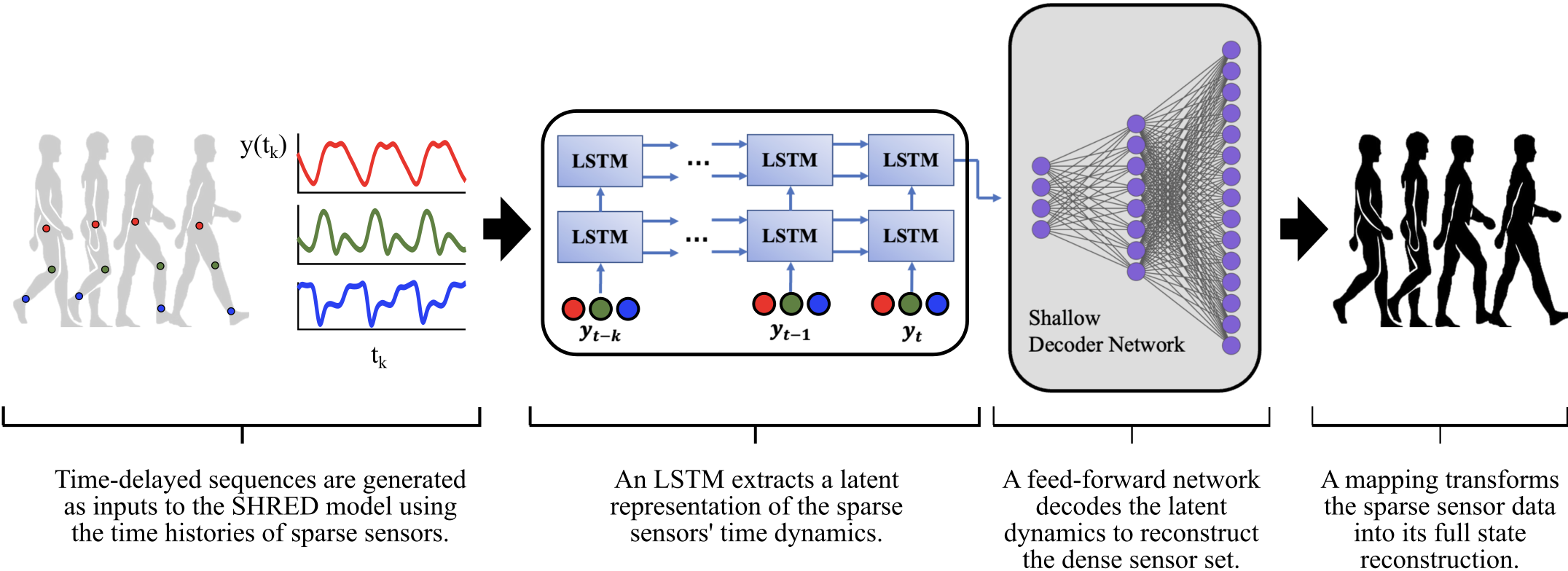Human motion data expansion from arbitrary sparse sensors with shallow recurrent decoders
Published in bioRxiv, 2024

Advances in deep learning and sparse sensing have emerged as powerful tools for monitoring human motion in natural environments. We develop a deep learning architecture, constructed from a shallow recurrent decoder network, that expands human motion data by mapping a limited (sparse) number of sensors to a comprehensive (dense) configuration, thereby inferring the motion of unmonitored body segments. Even with a single sensor, we reconstruct the comprehensive set of time series measurements, which are important for tracking and informing movement-related health and performance outcomes. Notably, this mapping leverages sensor time histories to inform the transformation from sparse to dense sensor configurations. We apply this mapping architecture to a variety of datasets, including controlled movement tasks, gait pattern exploration, and free-moving environments. Additionally, this mapping can be subject-specific (based on an individual’s unique data for deployment at home and in the community) or group-based (where data from a large group are used to learn a general movement model and predict outcomes for unknown subjects). By expanding our datasets to unmeasured or unavailable quantities, this work can impact clinical trials, robotic/device control, and human performance by improving the accuracy and availability of digital biomarker estimates.
Submitted to IEEE Transactions on Neural Systems and Rehabilitation Engineering
